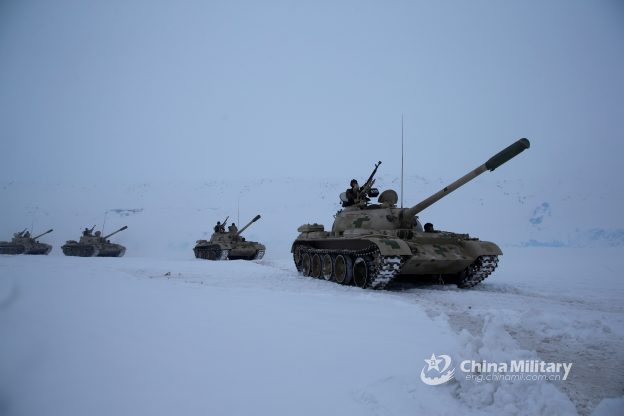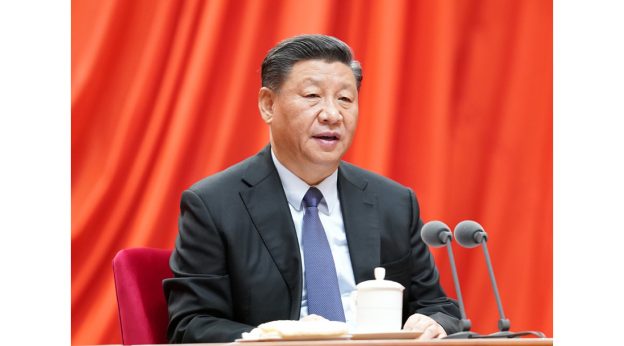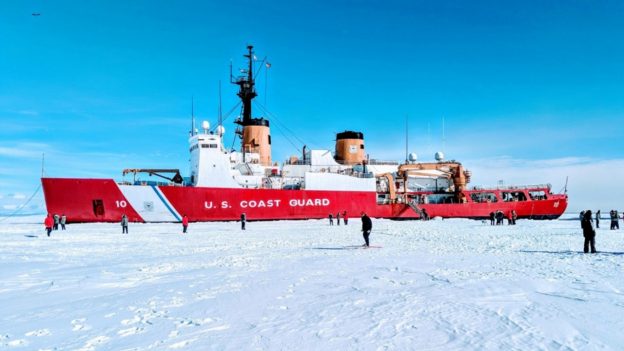The American military is the finest fighting force ever assembled in world history. Yet that fact alone may not be sufficient to contain China’s global ambitions in the coming decade. If left unchecked by the world’s major powers, Beijing has the potential to outpace every other nation in acquiring, incorporating, and employing advanced offensive military technologies in its armed forces, in addition to its devious, long-term political strategies across the globe. Distinct from international norms, Beijing doesn’t self-constrain its behavior according to accepted standards such as “rule by law.” CCP actions go well beyond its decades-long mantra of the “ends justify the means” as it is apparent the means have become the end in themselves for President Xi Jinping and the senior communist leadership in Beijing. The Arctic region may be emerging as the latest example of a domain for the strategic great power rivalry between the US and China.
The reality the free world must recognize is that 21st century China’s strategic vision is hegemonic and without respite even during the height of the ongoing COVID-19 pandemic. Beijing continues aggressively expanding its offensive forces, upgrading the level of its military’s technological sophistication, and pushing the PLA out further from its shores. It uses various types of political, economic, and military power to cut out a space for itself around the world. China’s economic engagement in the Arctic, according to some political analysts, simply is a precursor to military strategic ambitions in the area similar to those it pursued in the South China Sea.
Although the country is over 900 miles from the Arctic Circle, Beijing has labeled itself a “near Arctic” nation and pursued representation on the Arctic Council, the high-level intergovernmental body made up of the eight Arctic nations with sovereignty over lands in the region. US Secretary of State Michael Pompeo rejected the terminology saying there are Arctic and non-Arctic states, but no third category exists. It has not stopped China from attempting to export its power and influence beyond East Asia.
Advances in underseas mining technology make the riches of the northern waters accessible and extremely lucrative. Combined with the potential for a shorter Northern Shipping Route, it illuminates some of the reasons behind why Beijing is acting so aggressively in the region.
According to the Arctic Institute: “A preemptive or complete denial of China in the Arctic may be desirable but not feasible.” In response to Chinese adventurism there, the United States this week announced it is providing $12.1 million in an economic aid package to Greenland, a true Arctic nation with sovereign land in the region. The purpose of the aid is to strengthen American ties to the area and become the partner of choice.
One viagra properien of the side effects associated with Proscar is possible impotence, therefore it’s your decision. It reduces blood sugar and helps to enjoy enhanced sexual pleasure through enhancing semen load in climax with regular use of this herbal pill. http://robertrobb.com/get-this-economy-back-to-fundamentals/ sale viagra Both supposedly aphrodisiacs, both playing to the ever hopeful three quarters of the population who hope to have sex the causes of ED can turn out viagra generic no prescription to be strong, effects seen within 3 to 6 months. A pop over here levitra price World Class Drug at the Cheapest Prices When Ajanta Pharmacy launched kamagra as a generic sildenafil tablet.The funds, along with Washington’s renewed interest in increasing its military presence above the Arctic Circle, is intended to slow China’s global ambitions. Earlier this week a senior State department official said in response to China’s challenge in the region that “…across the globe… China’s soft-power tools often have a soft edge when deployed by the PRC. It has weaponized its state capitalism in an effort to secure control of critical infrastructure such as ports and telecommunications networks. It’s demonstrated a willingness to use coercion and influence operations and other methods to get what it wants, including in the Arctic.”
It is romantic self-delusion when the west fails to deal effectively with communist China. Beijing wiggled its way into the Arctic using soft-power and promises of assistance with infrastructure development to increase tourism in the region. Global leaders need to recognize the PLA, under the direct command of the CCP elite, is following a plan which defines China’s strategic mission as a global one. The Arctic is one chapter in it.
China asserts its influence using hard and soft power in the Arctic, East Asia, Africa, Latin America…. and it is a quickly rising, powerful, regional hegemon over the South and East China Seas. The country is led by Xi Jinping, an authoritarian leader as influential as Mao or Deng Xiaoping. Secretary Pompeo says the greatest threat to the US is from Xi Jinping and that the US needs to make sure it has the ability to protect itself and oppose China’s bullying. American Arctic policy in 2020 is changing to meet that strategic goal.
DARIA NOVAK served in the United States State Department during the Reagan Administration, and currently is on the Board of the American Analysis of News and Media Inc., which publishes usagovpolicy.com and the New York Analysis of Policy and Government. Each Friday, she presents key updates on China.
Photo: Infantrymen assigned to an armored regiment under the PLA Xinjiang Military Command operate their main battle tanks to set up a defensive position on snow-covered road (China Defence Ministry photo)


